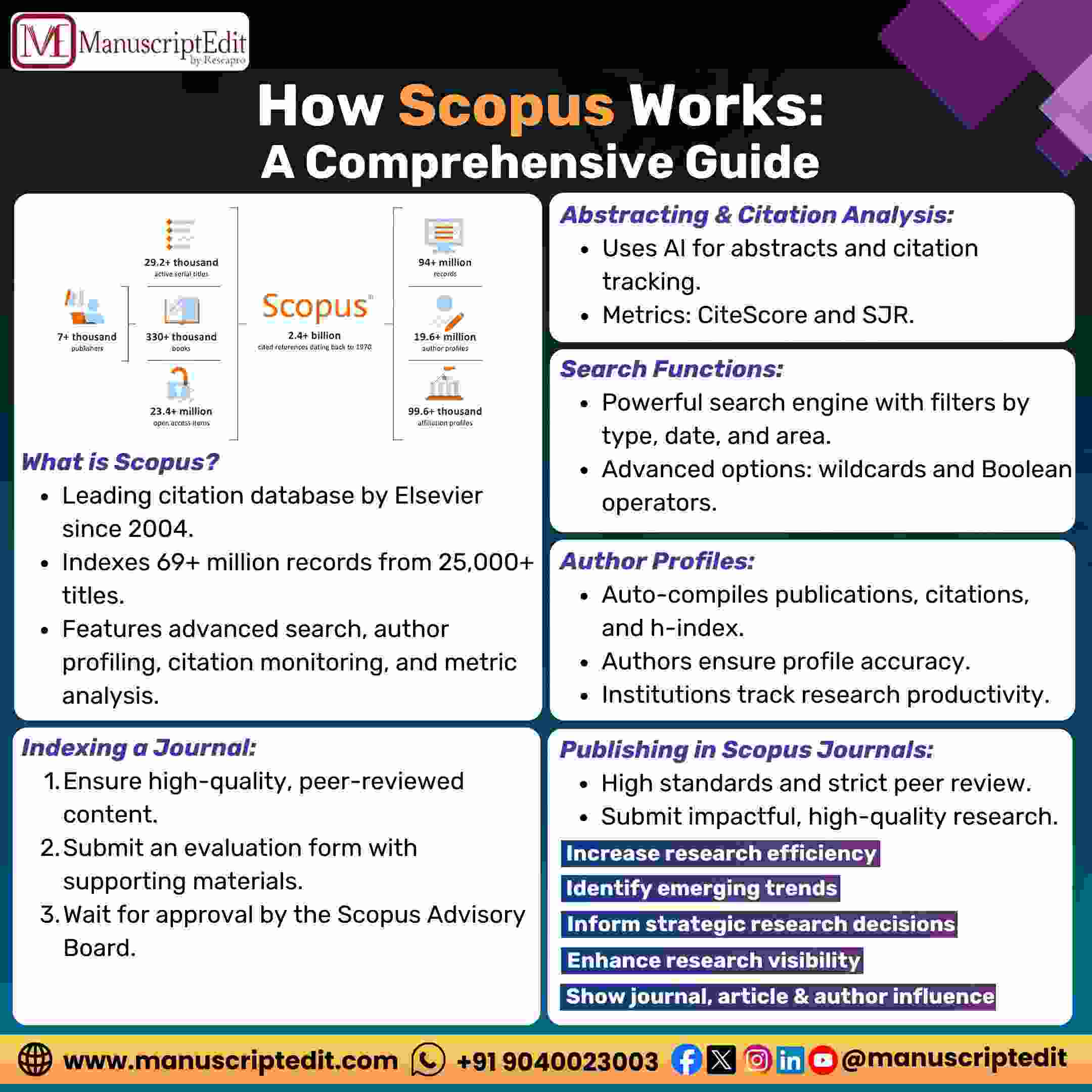|
Getting your Trinity Audio player ready...
|
 What is Scopus?
What is Scopus?
Scopus, a leading citation database, plays a vital role in academic research, and this post demystifies its inner workings and features.
Elsevier launched Scopus, a renowned abstract and citation database, in 2004. It indexes over 69 million records from over 25,000 titles, including books, conference proceedings, and peer-reviewed journals. Scopus offers advanced search capabilities, author and affiliation profiling, and citation monitoring. Its features also include Journal rating, metric analysis, and visualization tools.
How Do I Index a Journal to Scopus?
- Ensure that a journal satisfies the requirements for peer review, academic integrity, and high-quality content for indexing your journal in Scopus.
- Use the online form the Scopus Content Selection and Advisory Board provided to submit the journal for evaluation.
- Remember to include any necessary supporting materials, like sample issues, journal policies, and editorial board details.
How to Do Abstracting and Citation Analysis?
Scopus uses machine learning and natural language processing algorithms to generate abstracts and extract pertinent information from articles.
Citation analysis tracks and counts citations between papers, helping academics assess the quality and relevance of their research. It creates metrics like Cite Score (average citations per article) and SJR (SCImago Journal Rank), which quantify journal influence and prestige.
How to Do Subject Categories and Classification?
Scopus divides research into 313 specific categories from 27 significant areas using a hierarchical subject category system. Expert reviewers categorize journals based on their editorial focus, scope, and substance. Every journal has a category given to it, which makes it easier to conduct accurate evaluations of research output and to perform targeted searches and analyses within particular topics.
 How to Do Search and Retrieval Functions?
How to Do Search and Retrieval Functions?
Scopus provides a robust search engine with various search options, including affiliation, author, and keyword searches. Filters by document type, date, and subject area are examples of advanced capabilities. Refinement choices include author affiliation and citation count. Users can also employ wildcards and Boolean operators to refine their searches further.
How Do You Create and Manage Author Profiles?
An author’s publications, citations, and h-index are automatically compiled in their Scopus author profile. Authors can control their profiles and ensure they are accurate and complete. Institutions can monitor research productivity and compare themselves to peers by viewing the collaboration, performance measures, and research output displayed in affiliation profiles.
How Do You Get Your Journal Indexed?
Using the Elsevier website, submit an application to Scopus with comprehensive details about your journal’s editorial board, peer-review procedure, publication ethics, and content quality to have it indexed. Ensure your journal satisfies scopus requirements for journals, then bide your time for the Content Selection Advisory Board to review and approve it.
Is It Difficult to Publish in Scopus-Indexed Journals?
It might be challenging to publish in journals that Scopus indexes because of their strict peer review procedures and high standards. Writers must ensure that their research satisfies the journal’s quality and relevance standards and submit well-written, unique, and influential manuscripts. Because of the high rejection rate, admission is a noteworthy accomplishment.
Conclusion
Scopus offers researchers a powerful toolset; users can optimize their research and publication strategies by understanding its features and functionalities.
References
- https://www.elsevier.com/products/scopus/content
- https://medium.com/@ajaykumarkunti13/a-comprehensive-guide-to-scopus-journals-how-to-find-and-publish-in-top-quality-journals-c8229906faad
- https://guides.lib.unc.edu/scopus



